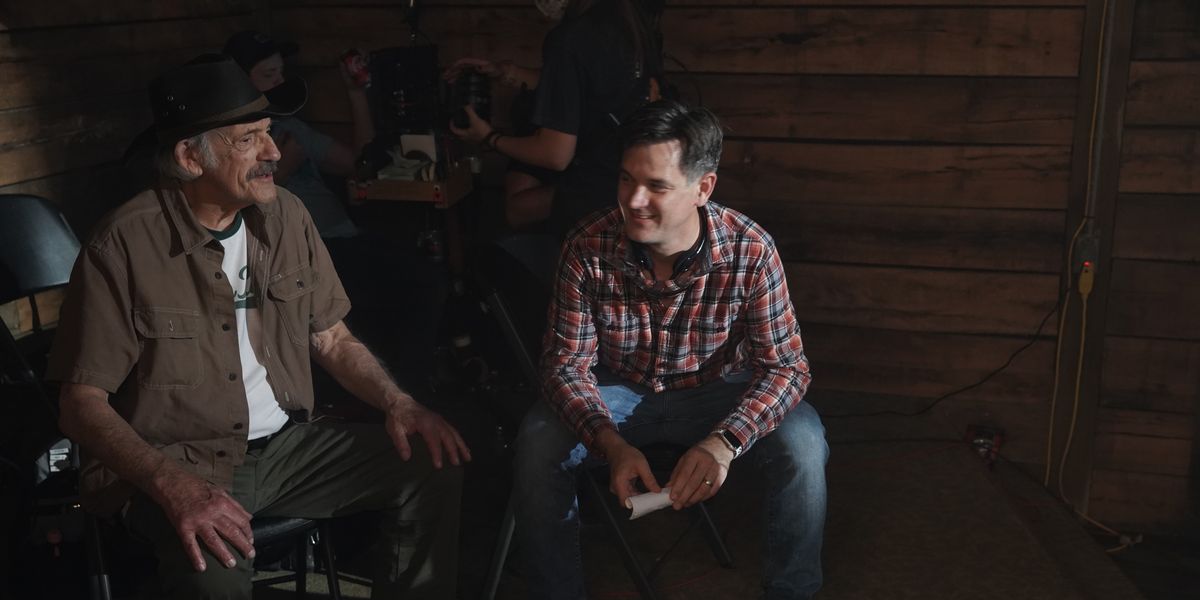
This post was written by Sean Olson.
I grew up watching genre movies and was a big fan of directors Ridley Scott, Steven Spielberg, James Cameron, and Richard Donner. Some of my favorites were Jaws, Back to the Future, The Goonies, Terminator 2, and Blade Runner.
With Camp Hideout, I had the extraordinary opportunity to work with one of my childhood heroes, Christopher Lloyd (Emmett “Doc” Brown from Back to the Future). When making the film, I drew upon my own experiences as an enthusiastic summer camp enthusiast to craft a delightful family comedy that pays homage to the films I cherished while growing up—movies in which children were the driving force behind the storytelling.
Camp Hideout | Official Trailer | In Theaters September 15
www.youtube.com
In terms of tone, Camp Hideout aims to evoke nostalgia and provide enjoyment for all ages, all while addressing themes of forgiveness and friendship in an accessible manner.
Before stepping into the director’s chair, I honed my skills as an editor, working on more than 25 features, including standout projects like the Sundance Film How the Garcia Girls Spent Their Summer featuring America Ferrera, Wyatt Earp’s Revenge with Val Kilmer, and Hallmark’s most-watched premiere, Christmas Under Wraps starring Candace Cameron Bure.
My journey also took me into the realm of unscripted film editing, where I delved into projects related to true crime, candid moments captured on camera, and pure entertainment. This experience significantly sharpened my storytelling abilities.
Being in the editing room has allowed me to be a better director because as an editor you invariably come to the realization of the coverage you wish you had. When I’m directing I’m identifying superfluous shots, pinpointing missing transition shots, and unearthing plot holes that would require attention during post-production.
 ‘Camp Hideout’Credit: Roadside Flix
‘Camp Hideout’Credit: Roadside Flix
In my latest endeavor, the family film Camp Hideout, I put these skills to the test. The project posed unique challenges, including a substantial cast, action-packed sequences, and a demanding shooting schedule.
I can’t emphasize enough how vital it is for filmmakers to craft a shot list. A shot list compels you to visualize the core elements of each scene, contemplate transition shots, and meticulously plan the cinematic ebb and flow.
Camp Hideout represents my third collaboration with cinematographer Isaac Alongi. Our prior projects, the sci-fi family films F.R.E.D.I. and Max Winslow and the House of Secrets, prepared us well for the intricacies of working with young actors.
Given the expansive cast, some scenes featured up to 11 cast members, necessitating careful planning.
At times, it was infeasible to film the entire scene with each cast member individually, so we paired them up whenever possible. So, what’s the solution when you have a cast member in nearly every scene but can only utilize them for part of your day?
Precision planning becomes paramount.
 Camp Hideout on set: Christopher Lloyd (Falco), Sean Olson (director), Corbin Bleu (Jake)Credit: Mark Levine
Camp Hideout on set: Christopher Lloyd (Falco), Sean Olson (director), Corbin Bleu (Jake)Credit: Mark Levine
In scenes involving younger actors, we prioritized capturing their performances first and then shifted our focus to the older cast members, occasionally deploying doubles for the kids in those scenes.
During the pre-production phase, we meticulously designed several moving masters to inject dynamism while optimizing time efficiency. We anticipated the need for multiple angles during our stunt sequences. Collaborating closely with our steadicam operator, Larkin McLaughlin, proved instrumental in achieving the desired effects.
Additionally, we frequently employed two, and sometimes three cameras for specific sequences to provide an abundance of options during the editing process.
The invaluable contributions of gaffer Ben Edwards were evident in the incorporation of numerous creative transitions, including those designed to introduce two central characters, Noah and Falco. Portrayed by Ethan Drew, Noah’s initial scene was brimming with action.
When he made his entrance, he sprinted right up to the camera lens, holding the frame just long enough to establish an emotional connection with the audience. On the other hand, for Christopher Lloyd’s character, Falco, I aimed for a more enigmatic introduction, orchestrating a walk into silhouette to evoke an air of mystery.
A common oversight I’ve noticed among filmmakers, drawing from my experience as an editor, is the tendency to cut immediately after the final line. It’s paramount to allow your actors at least 5 seconds after the last line to capture that transitional moment. As an audience, we yearn to feel these moments resonate, and by holding them, we gain valuable insight into the character’s emotions.
Let’s not forget the significance of sound. Anything you capture on set almost always sounds better than automated dialogue replacement (ADR). There’s a certain magic in those original sounds that’s challenging to recreate once filming is complete. Sometimes, simple fixes are available on set.
For instance, when an actor places an object down on a line of dialogue or a door slam during their lines, give the actors adjustments. Actors appreciate these adjustments to avoid the need for re-recording in post-production.
 ‘Camp Hideout’ cast and crew Credit: Mark Levine
‘Camp Hideout’ cast and crew Credit: Mark Levine
Looking ahead, my next project on the horizon is the creature-feature Paralyze, produced through my company, Trash Panda Entertainment, which includes producers Christian Beckman, Andrea Nelson, and my wife Kat Olson.
This venture builds upon the success of our sci-fi robot adventure, F.R.E.D.I., and utilizes our sister company, Quantum Creation FX, to design and bring our creature to life. We’re excited to continue delivering fresh, genre-bending entertainment for both the big and small screens.
This post was written by Sean Olson.
Author: Guest Author
This article comes from No Film School and can be read on the original site.
